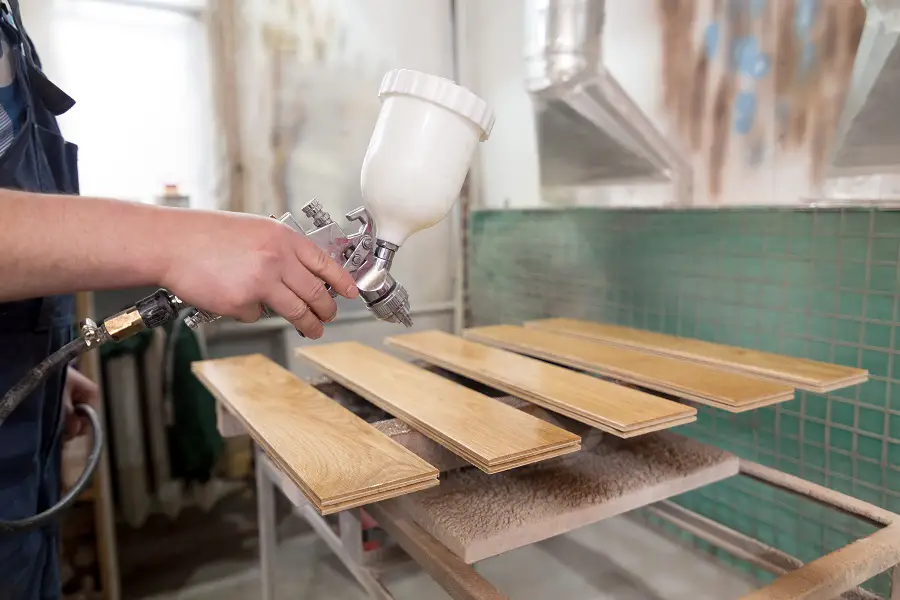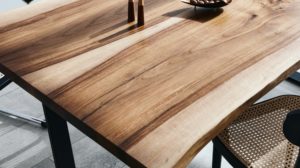The reasons for this are as follows:
I often see on profile groups, the recipients of work, who are dissatisfied that cracks have appeared on the painted or varnished surface of the furniture they have ordered. They are also among those who have repainted an older piece of furniture yourself and find they have the same problem. In most cases, the problem arises when the furniture has already arrived at the customer's home or some time after the DIY project has been completed. Unfortunately, fixing the problem means sanding down the affected surface and resuming the refinishing process. To avoid this situation, it is good to know what causes cracks in the lacquer or paint film. They relate to the material of the furniture, finishing materials and technology, environmental conditions, wrong combination of coats, ignoring some of the manufacturer's instructions and the list could go on. For a simpler presentation we have tried to group them into 5 broad categories which you will discover below.
Applying too thick layers
It is the most common mistake made by both professionals and amateurs. Professionals, even if they know that they only have to apply a certain number of coats of a certain thickness or grammage, may end up applying a thicker layer of material if they have to make remedial work. Sanding a coat that has, for example pronounced orange peel effect, it does not remove the layer completely and the amount applied may increase. Or you try to even out the color and insist on colored lacquer. The examples go on. When repainting it is simple, you apply thicker coats so that there is no spillage, the paint covers the surface better and the operation is completed more quickly.
The problem is that a thicker coating can crack because stresses build up inside the film. And not only when applied on solid wood, where dimensional changes can occur due to moisture, but also when applied on MDF or plywood. In order to avoid the occurrence of the defect, the total amount of finishing material applied should not exceed 400-450 g/m².
Wood dimensional variation
Cracks that appear in the film due to wood movement can be recognized by the fact that they follow the grain of the wood, being parallel to it, or the joint lines of the furniture elements. Causes can be:
- Incompletely or incorrectly dried wood
- coating exterior wood with varnishes that are too hard and rigid
- wrong constructive solutions
- very low humidity in the space where the furniture is used.
You can find information on the moisture content of indoor and outdoor wood here and here. This moisture has to be in equilibrium with the environment and if it is higher or lower, the wood will exchange with the environment to establish equilibrium. The greater the humidity difference from normal, the greater the movement of the wood and the greater the risk of cracking. If such wood is covered with a very hard and rigid varnish, stresses build up and lead to noticeable cracks. This is why exterior varnishes are elastic and less harsh, and why oiled or waxed wood behaves well in outdoor conditions.
A special situation is when cracks follow the joints of wooden door elements, the contours of the floorboards or even gaps appear between floorboards. It usually happens in winter when the indoor humidity is very low. As well as a thermometer, it's a good idea to have a hygrometer in the house to show the indoor humidity. Normal indoor humidity is 50-60%. Because of the heating, but also the low outside humidity in winter, the indoor humidity drops and re-equilibrates with the water found in indoor objects, including wooden floors, doors and furniture. Humidifiers are recommended to avoid this. If such a situation has arisen it is best not to rush with the remedy and wait for the warm season. It is possible that the defect will disappear and no further action will be needed.
Incompatibility between layers
The application of varnishes or paints that are not compatible with each other can lead to cracking when the varnish above dries. The cracks are in the form of a network and cover the entire surface. For example, if you apply an organic solvent-based paint (polyurethane, polyester, acrylic solvent-based) over alkyd or oil-based paint, you will end up with a cracked surface. The paint on top will collect in thousands of little islands. This is actually what underlies the effect crakele (cracked, crackingCracks also occur if polyurethane varnish with coatings is applied over nitrocellulose varnish. In this case the cracks are gathered up from place to place (in the factory it was said that the varnish had bloomed).
For some varnishes or paints the manufacturer recommends a single coat. The system comprises several coats of primer and only one coat of varnish/paint. It is possible that the varnish may contain wax and applying another coat on top of the one already applied may cause cracks in the film. If you need to apply another coat, sand the previous coat lightly and wipe it with thinner.
Areas in need of special treatment
When finishing the milled areas of MDF, but also on solid wood in the area of the fiber ends, very fine cracks can sometimes appear. These are highly absorbent areas where varnish or paint can come into contact with substances or tannins inside. To avoid problems, these areas are sanded very well and sealed with special materials (polyurethane or water-based sealants). Blocking the absorption results in more uniform staining in wood. Those areas (which craftsmen in the factories call "saps") are full of fiber ends that absorb a large amount of wood stain and thus darken the color greatly.
The cheap option to block absorption is to use an aqueous solution of aracet (PVA adhesive) that you apply with a brush. This is what they used in the past. The method is indeed cheaper, but it is also less controllable and depends a lot on experience. Too little may not block absorption sufficiently and too much may cause the varnish or paint to lose its adhesion.
Failure to follow technology or work instructions
I always remind that it is very important to follow the instructions for using the materials or technologies recommended by the customer. Again, failure to follow the technology, the working times, can lead to cracks in the film. Here are some examples:
- using too much catalyst in the case of hardening varnishes (type A+B)
- using varnish + hardener mixtures after the time they can be used has passed (pot-life outdated)
- applying another coat before the previous one is completely dry
- store water-based varnishes below 0° and use after a freeze-thaw cycle.
Using more catalyst makes the varnish more brittle, more sensitive to mechanical action. The film can shatter like a glass film if an object is dropped on it or hit harder. Water-based varnish used after freezing also looks like broken glass.

The appearance of cracks in the varnish or paint film is a fascinating subject and much can be said. What is good to remember is that cracks that follow the grain of the wood are also caused by the moisture content of the wood, whereas cracks that spread irregularly in all directions are the fault of the varnish/paint or the method of application.
I hope you find the above helpful. If you have had such situations, let us know what caused them and how you solved the problem. And if you have any questions or queries, please leave them below in the space provided. I will be sure to reply.




































Add comment